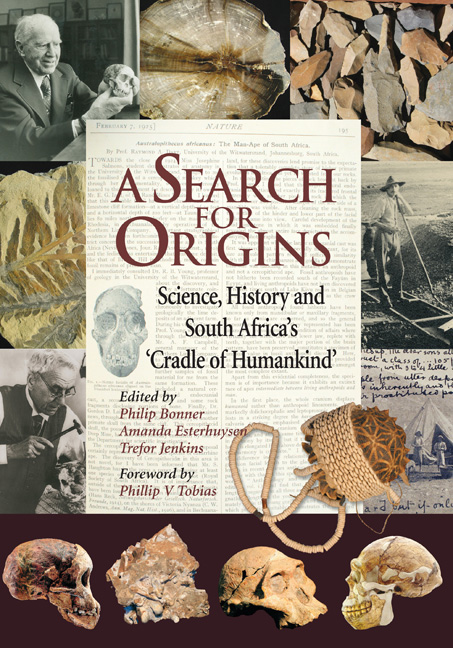Book contents
- Frontmatter
- Contents
- Map
- Foreword
- PART 1 Introduction: Africa is Seldom What It Seems
- PART 2 Introduction: Fossils and Genes: A New Anthropology of Evolution
- PART 3 Introduction: The Emerging Stone Age
- PART 4 Introduction: The Myth of the Vacant Land
- PART 5 Introduction: The Racial Paradox: Sterkfontein, Smuts and Segregation
- Chapter 12 The Legacy of Gold
- Chapter 13 The Story of Sterkfontein Since 1895
- Chapter 14 The South African War of 1899–1902 in the ‘Cradle of Humankind’
- Chapter 15 White South Africa's ‘Weak Sons’: Poor Whites and the Hartbeespoort Dam
- Epilogue: Voice of Politics, Voice of Science: Politics and Science After 1945
- Notes, references and recommended reading
- Notes on contributors
- Acknowledgements
- Index
Chapter 15 - White South Africa's ‘Weak Sons’: Poor Whites and the Hartbeespoort Dam
from PART 5 - Introduction: The Racial Paradox: Sterkfontein, Smuts and Segregation
Published online by Cambridge University Press: 31 May 2019
- Frontmatter
- Contents
- Map
- Foreword
- PART 1 Introduction: Africa is Seldom What It Seems
- PART 2 Introduction: Fossils and Genes: A New Anthropology of Evolution
- PART 3 Introduction: The Emerging Stone Age
- PART 4 Introduction: The Myth of the Vacant Land
- PART 5 Introduction: The Racial Paradox: Sterkfontein, Smuts and Segregation
- Chapter 12 The Legacy of Gold
- Chapter 13 The Story of Sterkfontein Since 1895
- Chapter 14 The South African War of 1899–1902 in the ‘Cradle of Humankind’
- Chapter 15 White South Africa's ‘Weak Sons’: Poor Whites and the Hartbeespoort Dam
- Epilogue: Voice of Politics, Voice of Science: Politics and Science After 1945
- Notes, references and recommended reading
- Notes on contributors
- Acknowledgements
- Index
Summary
The Hartbeespoort Dam today presents itself as a middle-class (white) playground. The description posted on a number of internet sites runs more or less as follows:
It is popular for a range of water sports and has a number of clubs – the most active ones are the Marathon Club which hosts an annual ‘Om die Dam’ marathon in August – and a number of golfing estates [Pecanwood Estate for example]. It also has a music farm labelled ‘Saloon Route 66’ which has been dubbed the home of country music in Africa. It has a number of property developments and timeshare facilities. It caters predominantly for the middle classes and is a popular area for suburbanites from Johannesburg and Pretoria residents.
Not much else about the dam and its environs readily comes to hand for the average visitor, whether foreign tourist or South African. All public information about its origins has been effaced and any sense of its true significance for early and mid-twentieth century South Africa has been comprehensively lost. Yet Hartbeespoort Dam in reality occupies a pivotal and highly symbolic role in the history of white South Africa in particular, standing as it did (but obviously no longer does) as a mute monument to systematised racial discrimination and domination. The primary purpose of the dam in its original conception was to contribute towards a solution of South Africa's ever increasing ‘poor-white’ problem’. Like so much else in this period of South African history, the idea behind the dam's construction is intimately connected with former Prime Minister JC Smuts. Subsequently, key politicians and government officials put Smuts's idea into practice. This chapter explores this story of the Hartbeespoort Dam as the crucible for state policies towards South Africa's poor whites during the first half of the twentieth century.
The weakest link in the chain
The growth of a class of poor whites first emerged as a serious source of concern in South Africa in the 1890s, especially once the arrival of railways in the interior around the middle of that decade, and the 1896 rinderpest epidemic which killed up to 90 per cent of the cattle population of South Africa, destroyed the lucrative occupation of transport riding hitherto resorted to by many landless and other whites.
- Type
- Chapter
- Information
- A Search for OriginsScience, History and South Africa's ‘Cradle of Humankind’, pp. 248 - 274Publisher: Wits University PressPrint publication year: 2007

